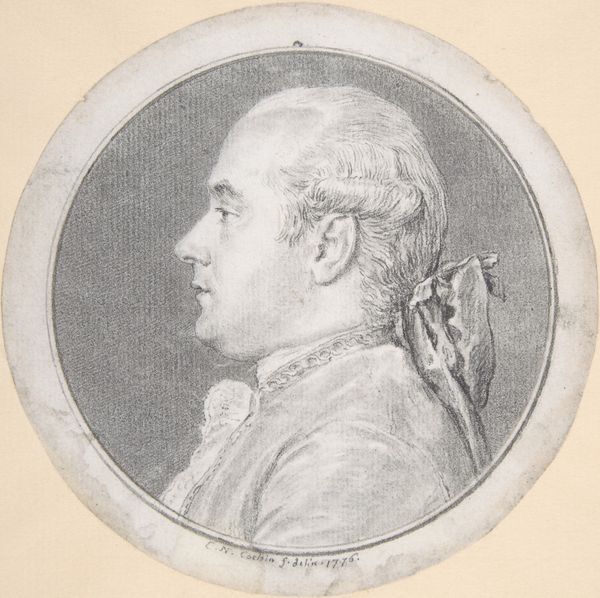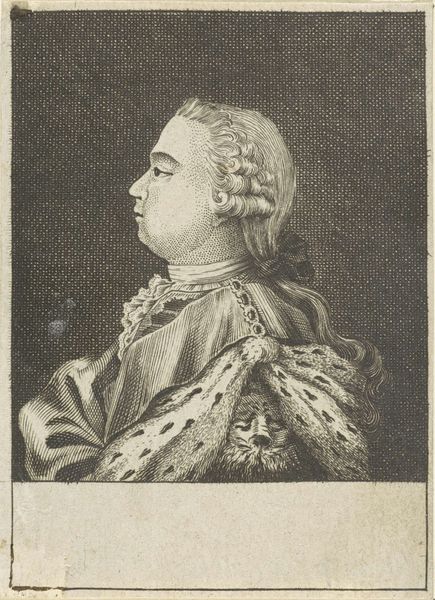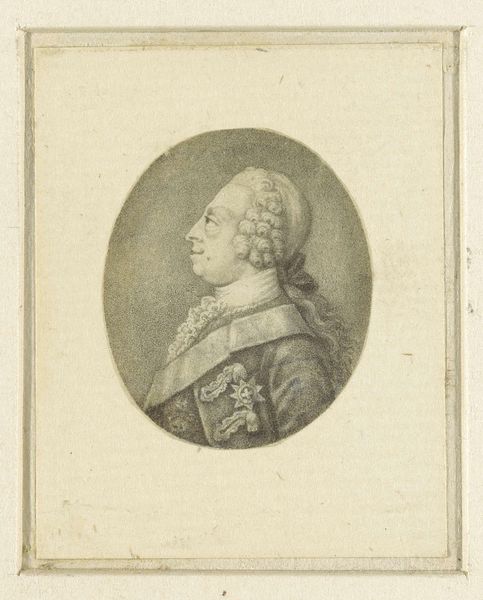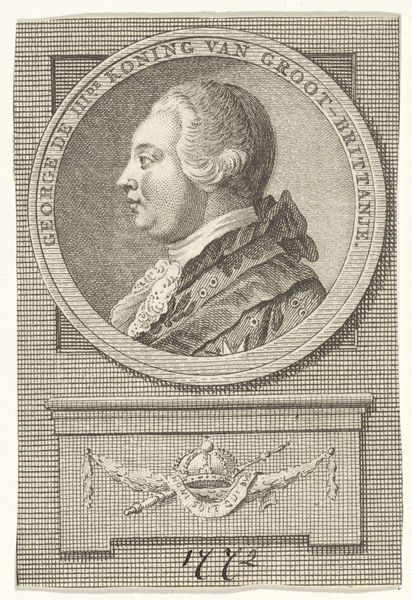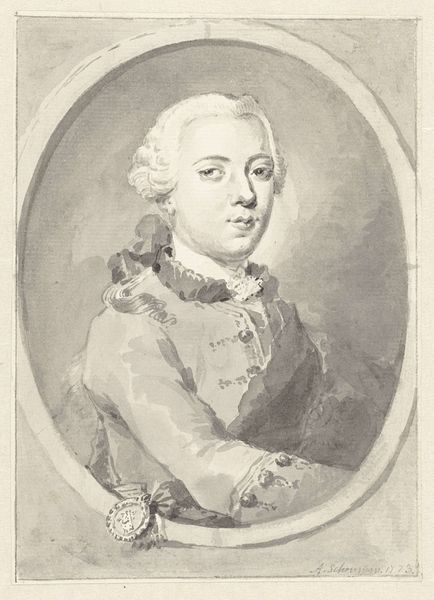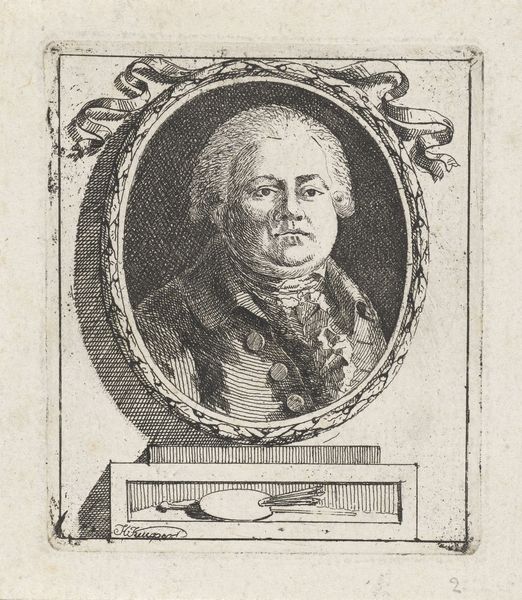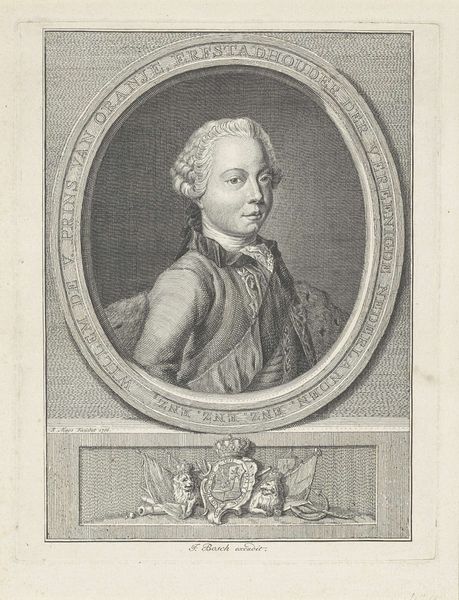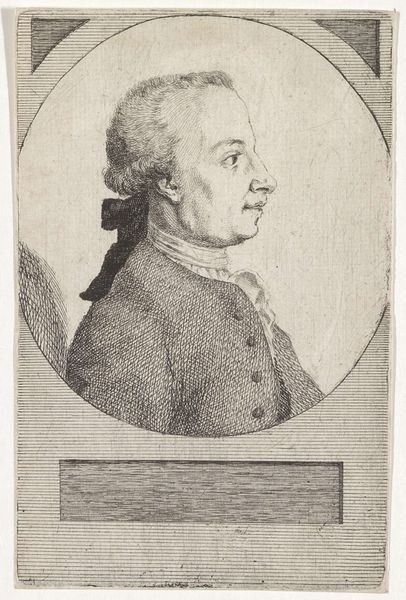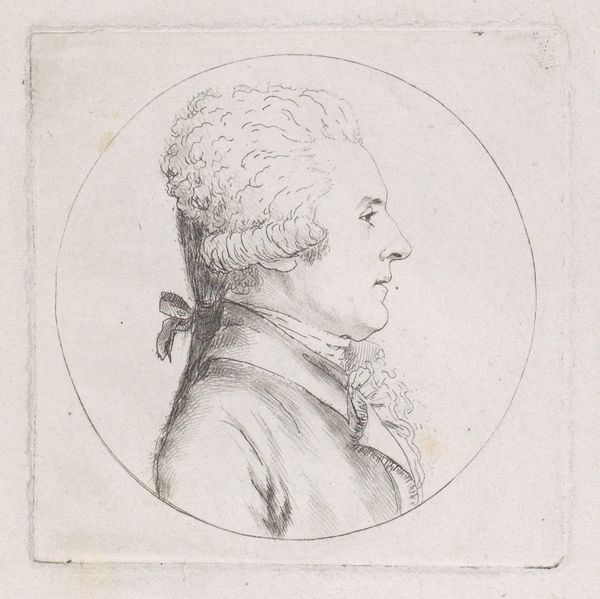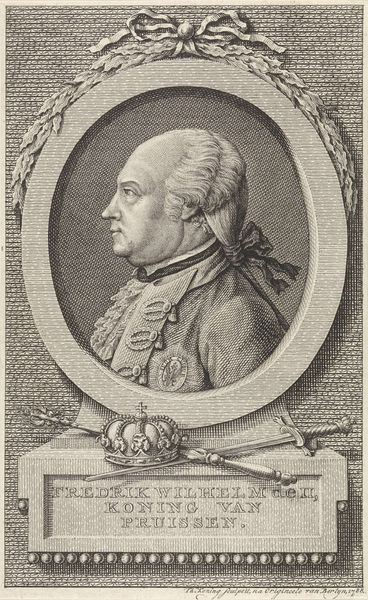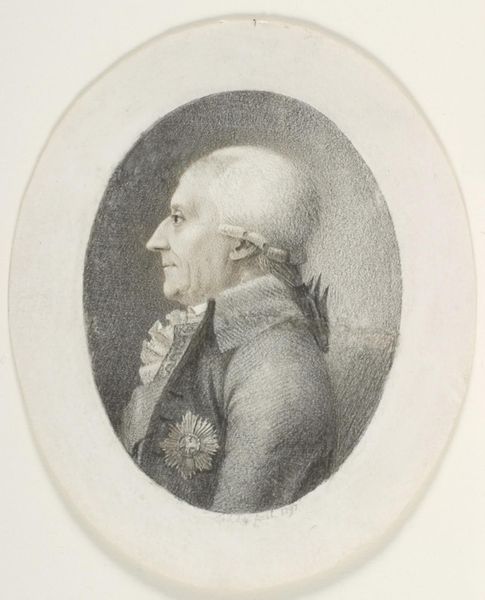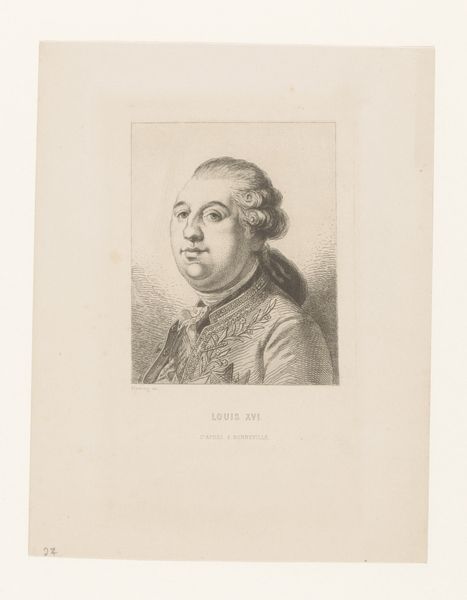
Copyright: Rijks Museum: Open Domain
Justus Chevillet made this portrait with graphite, a humble material, yet perfectly suited to capturing the texture and character of his sitter. Look closely, and you’ll see how Chevillet masterfully uses the graphite to suggest the crisp fabric of the sitter’s coat, the soft ruffles at his neck, and the elaborate curls of his wig. Consider, though, the social context implied by these details. Each element of this man’s attire speaks to a culture of labor and consumption. The wig, for example, represents not only status but also the labor-intensive process of its creation. Graphite itself, though seemingly simple, connects to broader issues of extraction and trade. Chevillet transforms this common material into a document of its time, a visual record of 18th-century society. This portrait is a reminder that even the most straightforward image is rooted in making, materials, and the social realities of its creation.
Comments
No comments
Be the first to comment and join the conversation on the ultimate creative platform.
